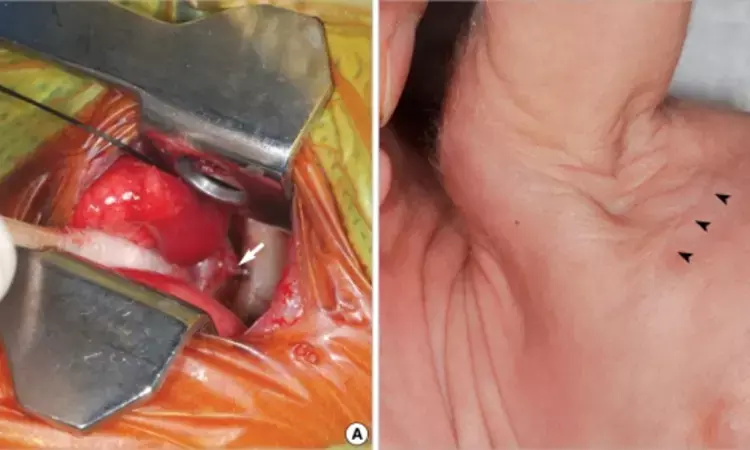- Home
- Medical news & Guidelines
- Anesthesiology
- Cardiology and CTVS
- Critical Care
- Dentistry
- Dermatology
- Diabetes and Endocrinology
- ENT
- Gastroenterology
- Medicine
- Nephrology
- Neurology
- Obstretics-Gynaecology
- Oncology
- Ophthalmology
- Orthopaedics
- Pediatrics-Neonatology
- Psychiatry
- Pulmonology
- Radiology
- Surgery
- Urology
- Laboratory Medicine
- Diet
- Nursing
- Paramedical
- Physiotherapy
- Health news
- Fact Check
- Bone Health Fact Check
- Brain Health Fact Check
- Cancer Related Fact Check
- Child Care Fact Check
- Dental and oral health fact check
- Diabetes and metabolic health fact check
- Diet and Nutrition Fact Check
- Eye and ENT Care Fact Check
- Fitness fact check
- Gut health fact check
- Heart health fact check
- Kidney health fact check
- Medical education fact check
- Men's health fact check
- Respiratory fact check
- Skin and hair care fact check
- Vaccine and Immunization fact check
- Women's health fact check
- AYUSH
- State News
- Andaman and Nicobar Islands
- Andhra Pradesh
- Arunachal Pradesh
- Assam
- Bihar
- Chandigarh
- Chattisgarh
- Dadra and Nagar Haveli
- Daman and Diu
- Delhi
- Goa
- Gujarat
- Haryana
- Himachal Pradesh
- Jammu & Kashmir
- Jharkhand
- Karnataka
- Kerala
- Ladakh
- Lakshadweep
- Madhya Pradesh
- Maharashtra
- Manipur
- Meghalaya
- Mizoram
- Nagaland
- Odisha
- Puducherry
- Punjab
- Rajasthan
- Sikkim
- Tamil Nadu
- Telangana
- Tripura
- Uttar Pradesh
- Uttrakhand
- West Bengal
- Medical Education
- Industry
Axillary skin crease incision linked to serious surgical complications in PDA repair in low birth weight infants

Thoracotomy with posterolateral incision (PLI) is commonly used for surgical repair of patent ductus arteriosus (PDA) in extremely low birth weight (ELBW) infants. Some reports have described thoracotomy for PDA using an axillary skin crease incision (ASCI) in consideration of cosmetic problems such as surgical wounds and thoracic deformities
Axillary skin crease incision linked to serious surgical complications in PDA repair in low birth weight infants suggests a new study published in the BMC Surgery.
Thoracotomy with posterolateral incision (PLI) is commonly used for surgical repair of patent ductus arteriosus (PDA) in extremely low birth weight (ELBW) infants. Some reports have described thoracotomy for PDA using an axillary skin crease incision (ASCI) in consideration of cosmetic problems such as surgical wounds and thoracic deformities, but the details remain unclear.
In this study, we performed clipping ligation by thoracotomy with ASCI for ELBW infants with PDA from 2011 to 2015 for the purpose of improving cosmetic results, and retrospectively compared the results with those for conventional PLI cases performed from 2016 to 2020.
Results
ASCI was found to be associated with serious surgical complications and showed a significant difference in outcome parameters only for surgery time, suggesting a safety problem for ASCI. Considering these results, PLI allows clipping of the nearby PDA from the thoracotomy wound while looking straight ahead, whereas the PDA in ASCI is positioned deep and oblique to the thoracotomy wound, so the clipping angle is limited and accurate completion of the procedure is difficult.
Regarding PDA repair in ELBW infants, ASCI shows a high risk of serious surgical complications. Conventional PLI remains preferable for safe and accurate results.
Reference:
Okamoto, M., Tsuruno, Y. & Fukuzawa, H. Axillary skin crease incision versus conventional posterolateral incision in open repair of patent ductus arteriosus for extremely low birth weight infants: a retrospective study. BMC Surg 23, 168 (2023). https://doi.org/10.1186/s12893-023-02081-9
Dr. Shravani Dali has completed her BDS from Pravara institute of medical sciences, loni. Following which she extensively worked in the healthcare sector for 2+ years. She has been actively involved in writing blogs in field of health and wellness. Currently she is pursuing her Masters of public health-health administration from Tata institute of social sciences. She can be contacted at editorial@medicaldialogues.in.
Dr Kamal Kant Kohli-MBBS, DTCD- a chest specialist with more than 30 years of practice and a flair for writing clinical articles, Dr Kamal Kant Kohli joined Medical Dialogues as a Chief Editor of Medical News. Besides writing articles, as an editor, he proofreads and verifies all the medical content published on Medical Dialogues including those coming from journals, studies,medical conferences,guidelines etc. Email: drkohli@medicaldialogues.in. Contact no. 011-43720751


